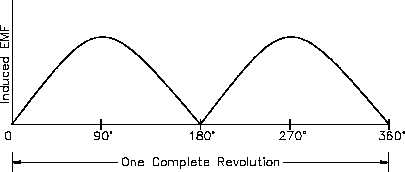DC GENERATOR THEORY
DC Generators
Each brush slides along one half of the commutator and then along the other half. The brushes
are positioned on opposite sides of the commutator; they will pass from one commutator half to
the other at the instant the loop reaches the point of rotation, at which point the voltage that was
induced reverses the polarity. Every time the ends of the loop reverse polarity, the brushes
switch from one commutator segment to the next. This means that one brush is always positive
with respect to another. The voltage between the brushes fluctuates in amplitude (size or
magnitude) between zero and some maximum value, but is always of the same polarity
(Figure 6). In this manner, commutation is accomplished in a DC generator.
Figure 6 Commutation in a DC Generator
One important point to note is that, as the brushes pass from one segment to the other, there is
an instant when the brushes contact both segments at the same time. The induced voltage at this
point is zero. If the induced voltage at this point were not zero, extremely high currents would
be produced due to the brushes shorting the ends of the loop together. The point at which the
brushes contact both commutator segments, when the induced voltage is zero, is called the
"neutral plane."
ES-05
Page 8
Rev. 0



